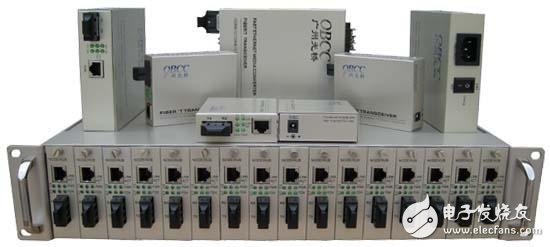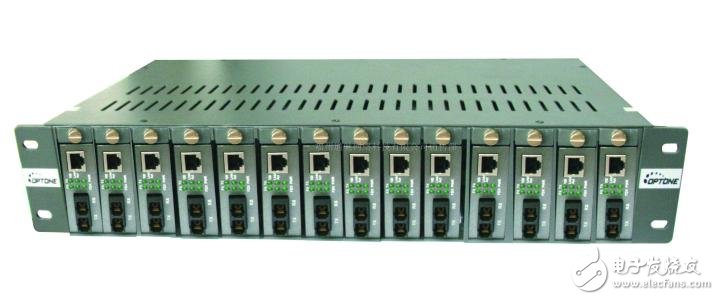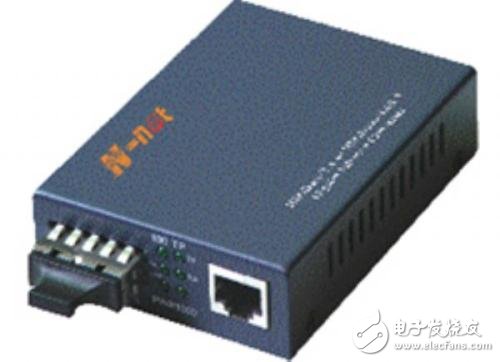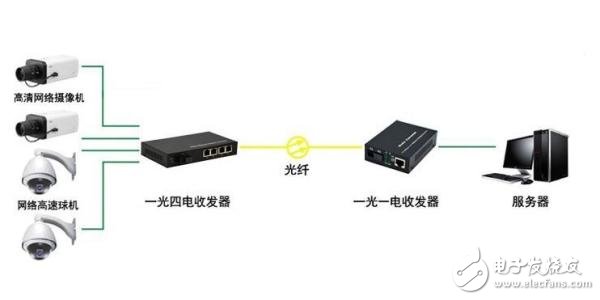The optical transceiver is an Ethernet transmission medium conversion unit that exchanges short-distance twisted pair electrical signals and long-distance optical signals. In many places, it is also called a Fiber Converter. Products are generally used in actual network environments where Ethernet cables cannot be covered and must use optical fibers to extend the transmission distance, and are usually located in access layer applications of broadband metropolitan area networks; for example, high-definition video image transmission for monitoring security engineering; It also played a huge role in connecting the last mile of the fiber to the metro and the outer network. According to the transmission mode of light in the optical fiber, it can be divided into: single mode fiber and multimode fiber. Unit: 1μm = 1 micron = 0.001 mm The core diameter of the multimode fiber is 50~62.5μm, the outer diameter of the cladding is 125μm, the core diameter of the single mode fiber is 8.3μm, and the outer diameter of the cladding is 125μm. The operating wavelength of the fiber has a short wavelength of 0.85 μm, a long wavelength of 1.31 μm and 1.55 μm. The fiber loss generally decreases with the wavelength lengthening, the loss of 0.85μm is 2.5dB/km, the loss of 1.31μm is 0.35dB/km, and the loss of 1.55μm is 0.20dB/km, which is the lowest loss of fiber, wavelength 1.65 The loss above μm tends to increase. Due to the absorption of OHˉ, there is a loss peak in the range of 0.90~1.30μm and 1.34~1.52μm, and these two ranges are not fully utilized. Since the 1980s, it has tended to use single-mode fiber, and the long wavelength is 1.31 μm. Multimode fiber MulTI Mode Fiber: The center glass core is thicker (50 or 62.5 μm) and can transmit multiple modes of light. However, the dispersion between the modes is large, which limits the frequency at which digital signals are transmitted, and is more severe as the distance increases. For example, a 600MB/KM fiber has a bandwidth of only 300MB at 2KM. Therefore, the distance traveled by multimode fiber is relatively close, usually only a few kilometers. Single mode fiber Single Mode Fiber: The center glass core is very thin (the core diameter is generally 9 or 10 μm) and can only transmit one mode of light. Therefore, the inter-mode dispersion is small, suitable for remote communication, but there are also material dispersion and waveguide dispersion, so that single-mode fiber has high requirements on the spectral width and stability of the light source, that is, the spectral width is narrow and stable. It’s better. It was later found that at a wavelength of 1.31 μm, the material dispersion and waveguide dispersion of the single-mode fiber are positive and negative, and the sizes are exactly equal. This means that at a wavelength of 1.31 μm, the total dispersion of the single mode fiber is zero. From the loss characteristics of the fiber, 1.31 μm is exactly a low loss window of the fiber. Thus, the 1.31 μm wavelength region becomes an ideal working window for fiber-optic communication, and is also the main working band of practical fiber-optic communication systems. The main parameters of the 1.31 μm conventional single-mode fiber are determined by the International Telecommunication Union ITU-T in the G652 recommendation, so this fiber is also called G652 fiber. The difference between the two The fundamental difference between a single-mode fiber transceiver and a multimode fiber transceiver is the distance of transmission. Since the multimode fiber transceiver is multi-node and multi-port signal transmission in the working mode, the signal distance transmission is relatively short, but it is convenient, and the construction of the local area network is redundant. Single fiber is a single-node transmission, so it is suitable for the transmission of long-distance trunk lines, which constitutes the construction of a cross-city LAN. In terms of price, single mode is more expensive than multimode. Single mode fiber optic transceiver: transmission distance 20 km to 120 km Multimode fiber optic transceiver: transmission distance 2 km to 5 km Single fiber optical transceiver: Receive and transmit data transmitted on one fiber Dual fiber optic transceiver: receiving and transmitting data transmitted on a pair of optical fibers Sometimes we need to identify the type of fiber optic transceiver, so how do you determine if the fiber transceiver is single-mode or multi-mode? The following small series teaches you three ways to identify the single multimode type of a fiber optic transceiver. 1. Remove the optical transceiver dust head from the optical head and look at the color of the interface device inside the optical head. The inner side of the single-mode TX and RX interfaces are coated with white ceramic. The multimode interface is brown. 2, from the model to distinguish: generally see whether there are S and M in the model, S means single mode, M means multimode. 3. If it is already installed, you can see the color of the fiber jumper. Orange is multimode and yellow is single mode. Tip: Single-mode transceivers can operate with both single-mode and multimode fibers, while multimode fiber transceivers cannot operate with single-mode fibers. There is also a single multimode converter device in the market. The interchange of single mode fiber and multimode fiber can be solved. Pcb Board,Circuit Board,Pcb Electronics,Custom Pcb Cixi Zhongyi Electronics Factory , https://www.cx-zhongyi.com


